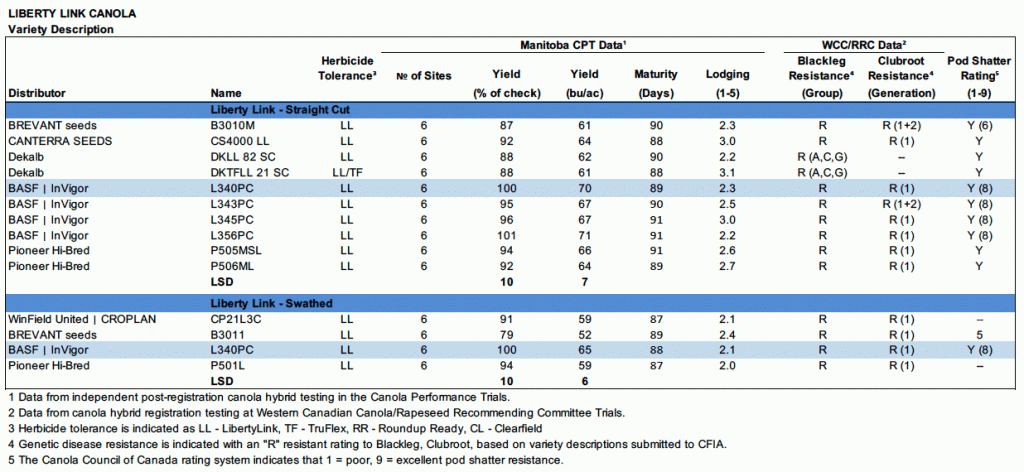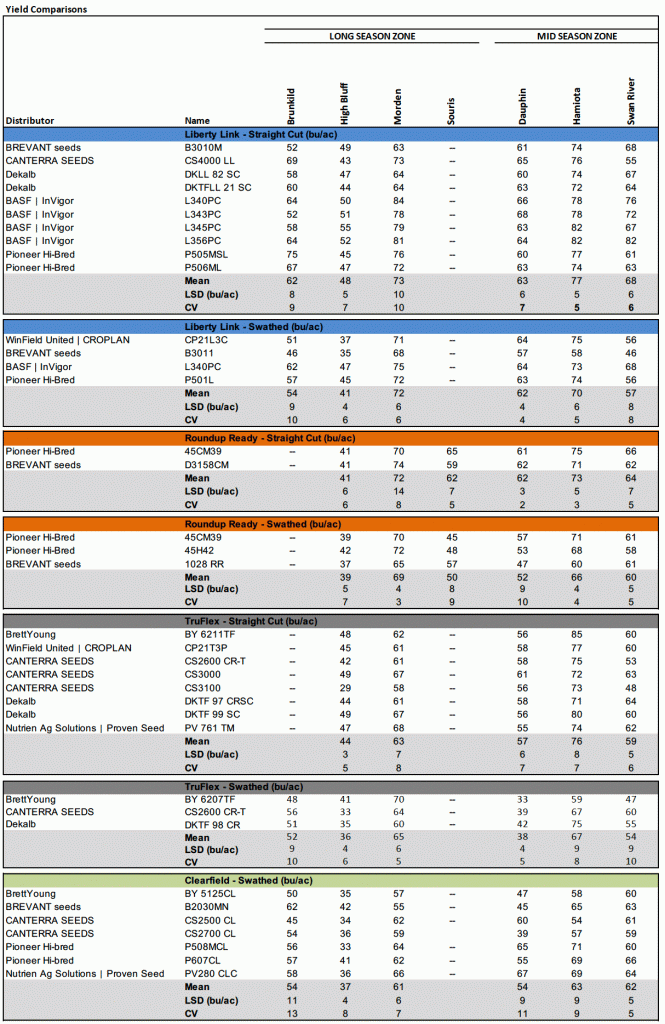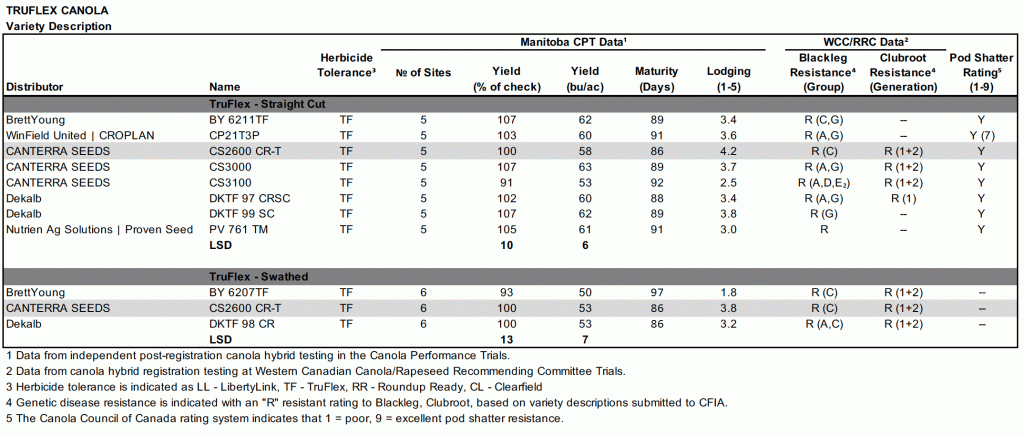Seed Manitoba Results – 2022
This data has been collected from Canola Performance Trial data focusing on Manitoba sites.  (Click image to enlarge)
(Click image to enlarge)
(Click image to enlarge)
(Click image to enlarge)
(Click image to enlarge)

(Click image to enlarge)
NOTES:
Canola Performance Trial Data:
All canola testing sites are divided into long, mid, and short-season zones. Only mid- and long-season zones apply to Manitoba.
All variety yields compared as a percentage of the check specific to that herbicide block and harvest type. To maintain trial consistency, and reduce risk of clubroot affecting yield trials, the check variety is a clubroot-resistant hybrid.
Canola yield trials are split into two categories: Standard Canola for traditionally swathed canola varieties, and Straight-Cut Canola for varieties marketed with pod-shatter tolerance.
Yields derived over two or more growing seasons are the best indicator of variety performance. For new varieties, “Zone Average Yield” over all sites is more reliable than data from a single location. Use single site year data with caution.
Comments:
Variety descriptions summarize the performance of varieties tested in the 2022 Canola Performance Trials (CPT). Data donated by the CPT Committee. For more information visit www.canolaperformancetrials.ca.
Lodging is rated on a 1 to 5 scale, where 5 is a completely lodged plant at harvest.
Blackleg Resistance
All varieties in the table below have a resistant (R) rating for Blackleg (<30% infection of Westar check). Lesions and yield loss can still occur, based on the level of inoculum and blackleg pathotype in the field, in combination with environmental conditions conducive for disease development. Some seed distributors have chosen to provide backleg resistance grouping based on major-gene (qualitative) resistance within that variety in addition to the traditional rating. Labels identifying major resistance genes present will use the letters: A, B, C, D, E1, E2, F, G, H, and X.
Adult-plant (quantitative) resistance remains an important factor. Visit www.blackleg.ca for details on how resistance groups work.
Clubroot Resistance
Clubroot is a long-lived soil-borne disease that can impact canola performance. Using clubroot resistant varietes in Rural Municipalities where clubroot has been found is highly recommended as a risk mitigation tool. To know for sure if your own fields have clubroot, soil testing is the only way to find out prior to finding galls in the field. See page 59 for the map indicating clubroot distribution in Manitoba.
Clubroot resistance is generally termed 1st or 2nd Generation based on genetic source. First-generation clubroot resistance confers resistance to clubroot pathotypes 2F 3H, 5I, 6M, and 8N, on the Canadian Clubroot Differential Set (Strelkov et al., 2018).
Second-generation sources contain resistance to a varying set of pathotypes outside the original five first-generation pathotypes, but may also have resistance to the original five.
For further information on clubroot resistance labels, please visit www.clubroot.ca, refer to the company website, or speak with your seed representative.
Pod Shatter Resistance
The pod shatter rating scale was developed by the Canola Council of Canada in 2021. Varieties that have not been rated on the new scale are marked as “Y” if they contain some form of enhanced pod shatter resistance, or — if they do not.
Numeric pod shatter ratings are provided by their respective companies, or may not yet be identified on the new rating system.


